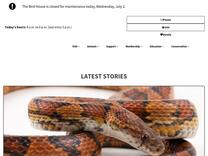Gorilla See, Gorilla Do | Smithsonian’s National Zoo and Conservation Biology Institute https://nationalzoo.si.edu/animals/news/gorilla-see-gorilla-do
Calaya is not like the Zoo’s other western lowland gorillas. For months, keepers tried to encourage Calaya to train and participate in enrichment activities to no avail. Then came an “AHA!” moment: Calaya learned best not solely through human interaction, but by observing the actions of the other gorillas. That breakthrough, says animal keeper Melba Brown, allowed Calaya to quickly master husbandry behaviors and demonstrate her brilliance. Now that we know how Calaya learns best, it gives her more opportunities to interact with keepers and we can care for her more thoroughly through husbandry training. In the short span of a year and a half, she has made tremendous progress. When it is time for an enrichment or training session, Calaya will often grab an object to sit on (like a spool, hay mound or a milk crate) and she will do all the husbandry behaviors asked of her. We can examine her head, brow, ears, hands, feet, back, chest, belly, arms, shoulders and knees. These behaviors are the building blocks for more complex behaviors, including maternal training. Calaya came to the Zoo, in part, because she and our silverback male, Baraka, have a Species Survival Plan recommendation to breed. At Woodland Park Zoo, she had exposure to the birth and rearing of an infant. However, before we take her off birth control we want to help Calaya—who would be a first time mom—learn how to care for an infant. As Calaya’s maternal training advances, she will voluntarily participate in ultrasounds which enable us to track fetal development should she become pregnant. Since she learns best by observing others, we are showing her photos of mothers gently holding and nursing infants. It will be an exciting journey getting Calaya ready for motherhood!
See, Gorilla Do Calaya is not like the Zoo’

